It’s a nasty feeling when your eyes get itchy and watery the moment you step outside. You can blame pollen or dust, but there’s another culprit in the mix—air pollution. Sometimes, the sneezing and eye-rubbing just doesn’t quit, even if you’re hiding indoors. The truth is, allergic conjunctivitis—that classic red, gritty, allergic eye problem—has a secret enemy floating right in the air we breathe. Modern life means more people than ever live with pollens colliding with urban air, exhaust, ozone, and fine particles. Your eyes, always exposed, are on the front lines.
Why Air Pollution Triggers and Worsens Allergic Conjunctivitis
First, allergic conjunctivitis is your body’s over-the-top reaction to stuff it thinks is dangerous: pollen, dust mites, pet hair, even mold. When these “allergens” hit the surface of your eyes, your immune system freaks out. The result? Histamine gets released, your eyes turn red, itch, burn, and sometimes swell up so much it’s hard to see straight. But here’s the kicker: when you add air pollution into this soup, your symptoms get amped up, even if you’ve never had allergies before.
Let’s get specific. Air pollution isn’t just one thing. It’s a nasty cocktail—vehicle exhaust (think nitrogen dioxide, or NO2), tiny particles called PM2.5, smog, and ozone minding its own business until sunny days come around. Big cities are loaded with this stuff. Some research done in South Korea and India found kids living in high-traffic city zones had much higher rates of allergic conjunctivitis than those out in cleaner country air. Why? These pollutants damage the surface of the eye even before allergens show up, making it easier for the bad guys (pollen, for example) to sneak in and cause trouble.
Take nitrogen dioxide—studies in Shanghai measured ambient NO2 levels and found that a jump of just 10 µg/m³ per day caused a 15% spike in eye allergy ER visits. That’s not a coincidence. PM2.5, the fine stuff that invisibly floats through smog, has been shown to stick to the eye surface, irritating little cells and breaking down the tear layer. Not only do your eyes dry out, but the barrier protecting them gets weaker. Allergens and microbes march right in. Ozone, formed by car fumes baking in sunlight, makes this spiral even worse. It sparks inflammation, breaks up normal eye proteins, and fires up your immune system even when pollen counts are low.
Want to see some numbers? Check out this comparison of how different pollutants stack up in making allergic conjunctivitis symptoms go from bad to worse:
| Pollutant | Main Source | Effect on Eyes | Spike in Symptoms Found |
|---|---|---|---|
| Nitrogen Dioxide (NO2) | Vehicle exhaust | Breaks down eye surface, easier allergic reactions | Up to 15% more ER visits per 10 µg/m³ jump |
| PM2.5 | Industry, cars, fires | Dry eyes, weakens tear film, boosts inflammation | 30% higher allergy reports on heavy-pollution days |
| Ozone | Sunlight + pollutants | Triggers immune reaction even with low pollen | 25% more symptoms after high ozone days |
So, why does this happen? Pollution particles are smaller and more “sticky” than most allergens. They latch onto the eye's surface and can even carry allergens deeper into your tissue. Your eye’s immune cells, already jittery around pollen, fire off even more histamine and other chemicals. Add this together, and your usual sneezing and itching feels like it’s been put on fast-forward. Cities like New Delhi or Los Angeles constantly see this effect in real-time during smoggy weather. For folks who work outside (couriers, construction, traffic cops), the risk climbs every single year.
What about children and older adults? Kids are more vulnerable because their bodies are still learning how to handle all this environmental chaos, and seniors have drier eyes, which don’t protect as well. That explains why emergency room stats in polluted cities spike especially for those two groups every pollen season. If you’ve lived in both a clean and a polluted area, you’ll notice the difference—the relief in the countryside is very real.
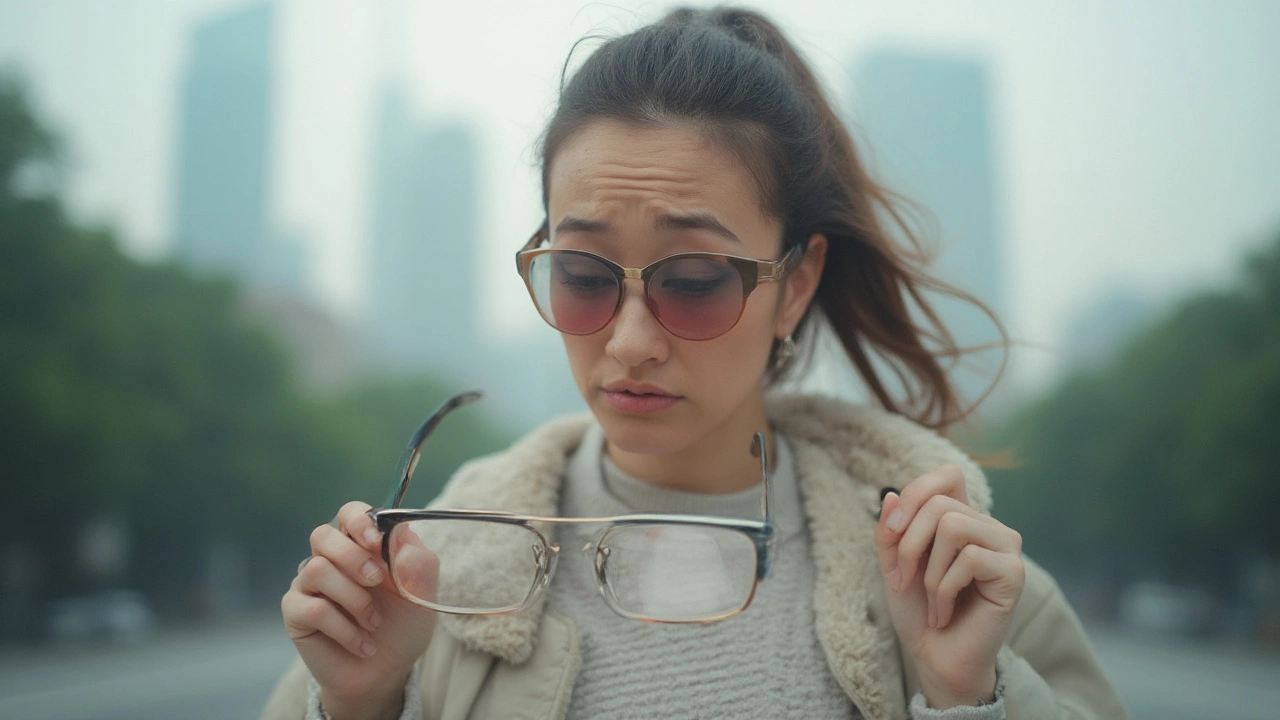
Eye Allergy Symptoms: How Pollution Makes Them Worse and Sticks Around
The classic signs of allergic conjunctivitis—itchy eyes, redness that rivals a tomato, watery discharge, swelling, even crusty gunk in the mornings—are all on pollution’s hit list. Normally, you might expect a few days of misery in spring, but with urban pollution, those symptoms can stretch into weeks, or even last all year.
It’s not just more days, it’s more intense misery. Folks exposed to higher pollution levels say their eyes not only itch, but actually hurt. They feel sandy, tired, and even sensitive to light. You might notice your contacts become unwearable, and eye drops that used to work no longer help. This is chemical irritation teaming up with a full-blown allergic reaction—which makes your eyes miserable from all sides. It’s no wonder some people think they’ve caught a long-lasting infection, only to find out it’s really an endless loop of pollution-pollen irritation.
Here’s something that surprises people: your eyes can become “sensitized” the longer you’re exposed. Basically, if you live around heavy air pollution, your immune system gets more trigger-happy every year. Over time, it takes less and less pollen to set off symptoms. A study in Tokyo followed families before and after a big industrial shutdown, and found kids’ eye allergies dropped by nearly half when pollution levels also fell. On the flip side, when Beijing’s smog spiked in late 2022, some clinics saw a 40% jump in conjunctivitis cases in just a few weeks. Crowded commutes by scooter, long walks by traffic, or just opening your window can set you off.
Let’s not forget people with asthma, eczema, or hay fever—your odds of getting serious eye symptoms go way up. There’s also a hidden effect: pollution messes with your tear production, making your eyes feel gritty and tired even if you don’t notice classic redness. For city dwellers always staring at screens, that dry, scratchy feeling can tip over into constant discomfort. That’s why even younger adults, who don’t think of themselves as “allergic types,” end up at the pharmacy begging for relief.
Wondering about the difference between indoor and outdoor pollution? Indoor air isn’t safe—cooking smoke, candles, cleaning sprays, pet dander, and even printer fumes can send your symptoms into overdrive. In one experiment in 2024, researchers set up air monitors in 50 homes in Houston during pollen season. They found that, on high-smog days, PM2.5 and NO2 seeped inside and allergy complaints doubled, even with windows closed. That’s a wake-up call for anyone assuming their home is a safe zone.
Here’s a simple breakdown showing which symptoms pollution worsens:
- Itchy eyes (much higher, longer-lasting itching and stinging)
- Redness and swelling (more visible veins, puffiness that can last days)
- Watery or sticky discharge (eyes glued shut in the morning, not just from infection)
- Light sensitivity (hard to see in sunlit or fluorescent rooms)
- Tearing that doesn’t quit, even when allergens are low
- Contact lens intolerance (dryness, discomfort kicks in fast)
- Blurry vision after time spent outdoors (caused by constant rubbing or dryness)
For anyone who works near traffic—bike messengers, teachers on playground duty, parking attendants—the odds stack up even higher. The warning signs? If you’re using artificial tears daily, skipping eye makeup for weeks, or carrying antihistamines with you everywhere, pollution might be turning your “seasonal” eye drama into a daily hassle.

Smart Tips to Combat Eye Allergies When Pollution Strikes
Life in a smoggy city doesn’t have to mean endless eye problems. There are straightforward steps that actually help. The first move: check local air quality reports. Many free phone apps (like AirVisual, Plume Labs, or IQAir) give you up-to-the-minute pollution numbers and pollen counts. If pollution is high, stay inside during peak traffic hours—usually mornings and late afternoons. Try to keep windows shut, especially if your street is noisy or clogged with cars.
Next, scrub the air indoors. Get a high-efficiency particulate air (HEPA) filter—you don’t need a pricey, industrial-size one. Small plug-in filters work for bedrooms or workspaces. Change filters regularly in central AC units, and avoid burning candles or incense indoors. For extra points, put a portable fan near the window to blow dirty air outside (not in). Dust and vacuum often, and mop if you have hard floors. That cuts down both pollution that sneaks in and regular house allergens.
What about personal eye care? Look for preservative-free artificial tears—that means no extras that might irritate things more. Washing your face and rinsing your eyelids with cool water after coming indoors helps rinse off pollutants and pollen stuck to eyelashes. For anyone with intense itching, cool compresses (a clean washcloth soaked in cold water) can calm things fast. Some eye drops now have barrier-forming ingredients (like hyaluronic acid) that help reinforce your natural tear film and block both pollution and allergens from sticking. Talk to your eye doctor—not all drops are equal, and sometimes over-the-counter brands cause more dryness than they fix.
Sunglasses aren’t just for fashion—they block wind, dust, pollen, and some airborne pollution from smacking you in the eye. For people walking or biking near traffic, wrap-around shades are best. Avoid rubbing your eyes (it feels good but just spreads allergens deeper). Use disposable tissues instead of cloth handkerchiefs. Wear a wide-brimmed hat in high pollen days. If you use contacts, switch to daily disposables or glasses when pollution spikes—contacts trap particles against the eye surface.
Doctors now recommend allergy pills or nose sprays for people with ongoing symptoms, especially if you have a combo of hay fever and eye problems. Prescription eye drops (like olopatadine or ketotifen) can cut inflammation on bad days. In severe cases, specialists use immunotherapy (allergy shots or drops), which trains your immune system to chill out in the face of allergens—even in polluted cities, this can drop symptoms by half or more over two years.
Got young kids or older parents at home? Don’t let them hang out near bus stops or busy streets during high-smog alerts. Keep their bedroom windows shut, and if possible, give them a break in parks or green spaces away from roads—plants filter out some particles naturally. Schools in cities like Seoul and Milan now move recess indoors on heavy pollution days, and allergy rates are starting to drop. If you have pets that roam outdoors, wipe their fur before they come into the house; that stops them from bringing pollen and pollution into your living space.
Into food fixes? While nothing beats blocking exposure, a diet rich in vitamin C (oranges, bell peppers), omega-3s (fish, walnuts), and carotenoids (carrots, leafy greens) boosts your eye health and may improve tear production. Some new studies point to probiotics (in yogurt or supplements) helping the immune system reduce overreaction, but don’t expect a miracle—they’re a helper, not a cure.
Finally, don’t tough it out if your eyes aren’t getting better. If you experience constant pain, blurry vision, or discharge that turns yellow or green, see an ophthalmologist pronto. Chronic eye allergies can, over time, lead to scarring or infections worse than the original allergy attack. Early help stops things from snowballing.
Living with air pollution means staying sharp and adapting. By understanding the role pollution plays in allergic conjunctivitis—and using real-world fixes—it’s totally possible to keep urban eye misery in check without locking yourself indoors all year. Eye allergies might be on the rise, but you’ve got tools, tricks, and smart choices to fight back.

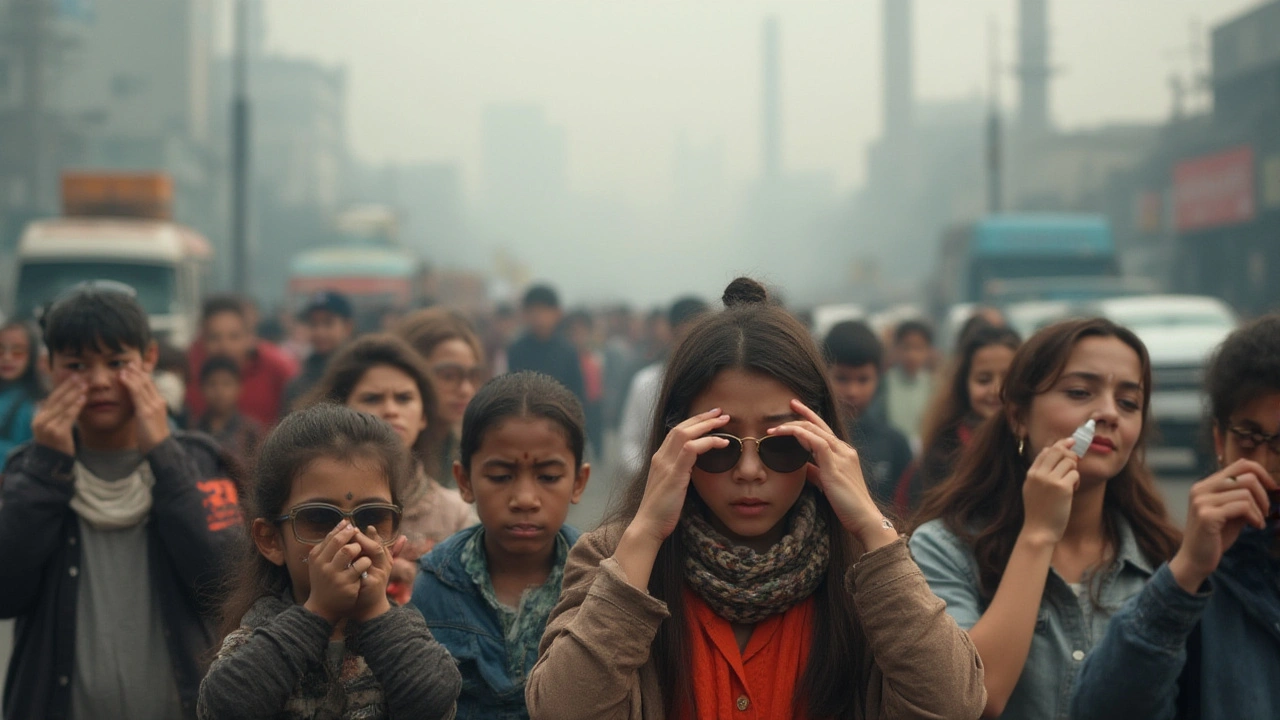
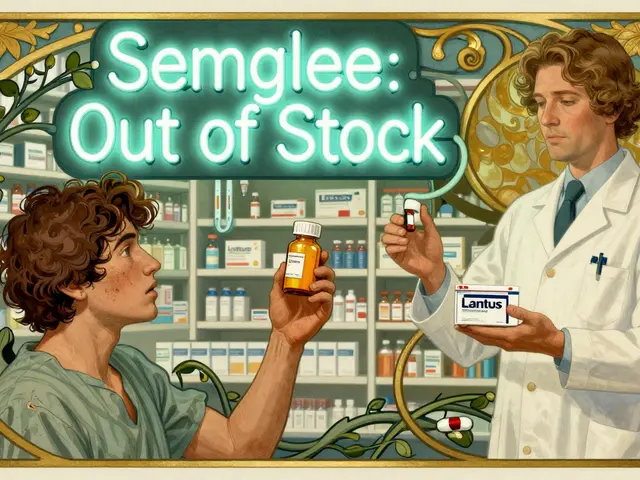
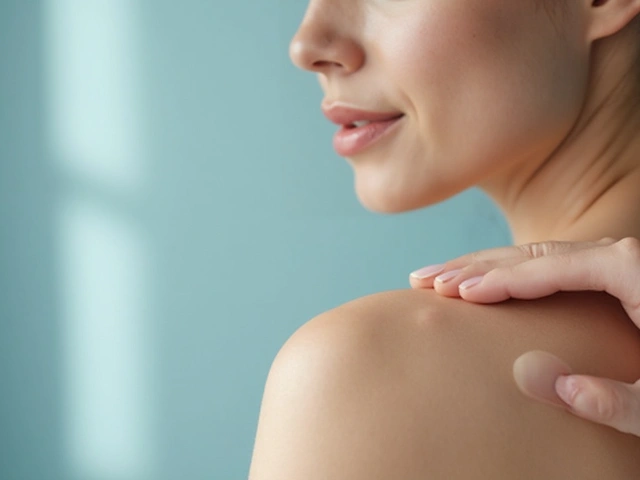

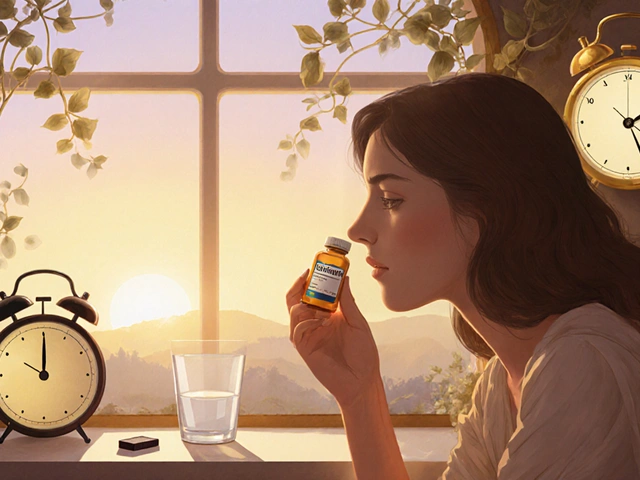
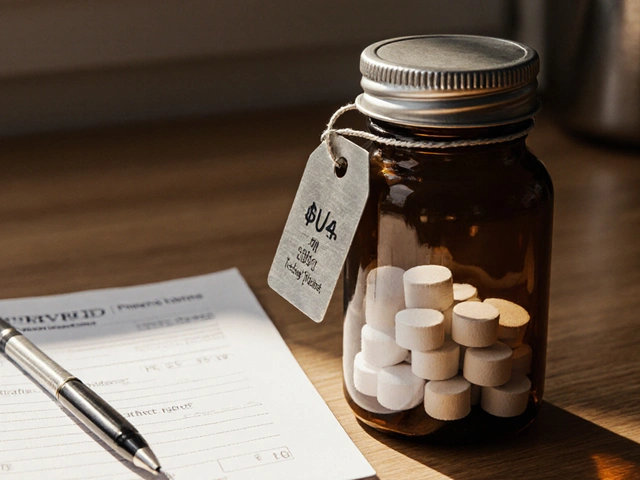
McKayla Carda
July 24, 2025 AT 05:15Been dealing with this for years. Switched to daily disposables and preservative-free tears - game changer. Also started rinsing my eyelids with cool water after commuting. No more 3 a.m. itching.
Simple, but it works.
Elliott Jackson
July 24, 2025 AT 10:13Let me tell you - this isn't just about eyes. Air pollution is slowly turning our cities into chemical soup zones. NO2 doesn't just irritate your eyes - it's eating away at your lung tissue, your brain, your sleep. We're not talking seasonal allergies anymore. We're talking chronic, low-grade poisoning disguised as 'bad air days'.
And no, wearing sunglasses won't fix systemic inflammation.
They're just giving you a false sense of control.
Howard Lee
July 24, 2025 AT 10:37Great breakdown of the science. The stats on PM2.5 and tear film disruption are particularly alarming. I’ve been using a HEPA filter in my bedroom for six months now - my morning eye crust has decreased by about 70%. Small changes add up.
Also, avoid scented candles. They’re basically indoor pollution bombs.
Hadrian D'Souza
July 24, 2025 AT 15:27Oh wow. A whole article about how pollution hurts your eyes. Groundbreaking. Next up: ‘How Breathing Air Can Cause Lung Discomfort - Shocking Findings!’
Meanwhile, the people who actually live in Delhi or Beijing are just shrugging and saying, ‘Yeah, we know.’
But hey, at least the middle-class Americans got their self-help guide.
Robert Gallagher
July 24, 2025 AT 19:51People need to stop treating this like it’s just a minor annoyance. I used to think eye drops fixed everything until I moved to LA and realized my eyes were basically crying for mercy every single day. Now I wear wraparounds, keep windows shut, and use a humidifier. It’s not glamorous. But it’s survival.
Also - stop rubbing your eyes. I know it feels good. But you’re basically sanding your cornea with your fingernails.
Be better.
Vivian Quinones
July 25, 2025 AT 12:05Why are we letting corporations poison us like this? It’s not natural. It’s not right. Our kids are paying the price while CEOs fly private jets to their second homes.
Stop blaming the air. Blame the people who made it this way.
Robert Spiece
July 26, 2025 AT 01:21So let me get this straight - we’ve got a biological mechanism evolved over millennia to defend against pollen… and now it’s being hijacked by man-made toxins that didn’t exist 100 years ago?
What’s next? Our immune system starts attacking Wi-Fi signals?
This isn’t allergy. This is evolution’s last stand against industrial stupidity.
And we’re still buying SUVs like it’s 1999.
Nicole Carpentier
July 27, 2025 AT 13:14Living in Houston, I can confirm - even with windows closed, that stuff gets in. My mom, 72, started having blurry vision last spring. Turns out it wasn’t cataracts - it was pollution-induced dry eye. She’s on prescription drops now. I bought her a HEPA filter. She cries when she says she can see her grandkids clearly again.
It’s not just eyes. It’s connection.
Abhay Chitnis
July 28, 2025 AT 06:30India has been dealing with this for decades. Delhi’s air quality index hits 900+ sometimes. Kids in schools wear masks just to see the blackboard. We don’t need a 5000-word article to tell us this. We live it.
But hey, at least your article made it to Reddit. Our reality? Still ignored by the global media.
Just saying.
Stacy Reed
July 29, 2025 AT 03:07It’s not just the pollution - it’s the loneliness of it. You sit there, eyes burning, and you know no one else really gets it. Your coworkers think you’re just being dramatic. Your partner says ‘just use eye drops.’ But they don’t feel the grit under your eyelids. They don’t know the weight of waking up every day with a body that’s been slowly betrayed by the air you breathe.
This isn’t a medical issue. It’s a spiritual one.
And we’re all just waiting for someone to notice.
Christopher Ramsbottom-Isherwood
July 29, 2025 AT 04:29Wait - you’re telling me ozone makes your eyes worse? I thought that was just a myth. Like, the ozone layer? Isn’t that good? Or is it bad? Wait, which one? I’m confused now. I thought ozone was the good stuff up there? And now you’re saying it’s down here making my eyes red? So… which ozone is the villain? And why didn’t my science teacher explain this?
Also, are we sure it’s not just allergies? Maybe I just hate trees.
Brandon Benzi
July 30, 2025 AT 19:15So now we’re blaming pollution for everything? What’s next - did the Chinese make my eyes itch? Or is it the Mexicans? Or maybe it’s the liberals who won’t shut up about climate change? I’ve lived in the same city for 30 years. My eyes have always been dry. You want to fix it? Stop letting everyone move here and turn it into a smoggy mess.
Also - wear glasses. Not those fancy sunglasses. Regular ones. Like my grandpa did.